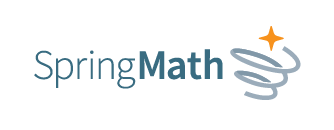Embracing SpringMath to help every student achieve math mastery
Three years ago, Renee Lepley, principal at North Star Central Elementary (Pennsylvania), was on a mission to improve math skills for all students — not just those who needed math intervention.
Lepley attended a conference focused on multi-tiered systems of support (MTSS), and one solution in particular caught her eye. SpringMath, a K-8 math intervention solution created by Dr. Amanda VanDerHeyden, uses streamlined assessments, simplified interventions, robust progress monitoring, and actionable reports to accelerate math achievement for all students — and that was exactly what Lepley’s district needed.

Finding (and closing) the gaps
Today, SpringMath is North Star’s go-to solution for increasing math fluency and screening students for specific learning disabilities. The district uses data from the platform to identify learning gaps and create road maps to close them, such as facilitating Tier 1, 2, and 3 interventions.
“Before SpringMath, our students were coming into fourth grade and being expected to jump right into fractions, without ever seeing fractions before. It was difficult for them. It was difficult for the teachers. Now, we introduce fractions in kindergarten. It’s just simple things, like what ‘one-half’ means, then we continue to build on that each year. When students reach fourth grade it’s no longer a foreign concept to them. They already have a basic understanding and solid foundation so our teachers can hit the ground running.”
- Renee Lepley, Principal, North Star Central Elementary
Reaching and retaining math mastery
Focusing on this type of math fluency has not only reduced the amount of instructional time teachers spend reviewing concepts from previous grade levels, but has also helped North Star students reach and retain math mastery. These improvements are especially evident in state test scores from the 2018 and 2019 school years.
When comparing math achievement levels — Below Basic, Basic, Proficient, and Advanced — an additional 240 kids scored Proficient or above in 2019. More than 11% of students moved up from Below Basic to Basic. But perhaps most impressive were Advanced proficiency scores that had improved by nearly 6% — a number that Lepley believes will only continue to increase as students continue SpringMath.

“Because SpringMath is data-driven, it tells us exactly what we need to do to set our students up for success. It takes the guesswork out of what we should be doing and creates a clear plan forward on both a classroom and an individual level.”
- Renee Lepley, Principal, North Star Central Elementary
Meeting the needs of teachers and students alike
SpringMath enables teachers to pinpoint exactly what a student or class needs, and identifies multiple options for providing support — and it’s customizable.
Beyond adapting instruction for classroom or individual interventions, North Star teachers customize the program for each grade level and classroom schedule. For example, some teachers choose to do the main lessons in one class, and partner work in another — making it easy to incorporate alongside core curriculum.
“You can really make it fit into your classroom schedule without sacrificing results,” Lepley explained. “Our teachers appreciate that. It is easy to implement and easy to use. From uploading documents and printing papers to seeing results, everything is quick and easy.”
Lepley recommends any district looking to improve math scores for all students should consider SpringMath.
“Definitely give it a try. Be patient, and give it some time when you start, because the results keep building. The first year we didn’t end up where we expected with state test scores, but continuing with SpringMath has helped close the gaps and continues to help our students achieve success.”
- Renee Lepley, Principal, North Star Central Elementary
